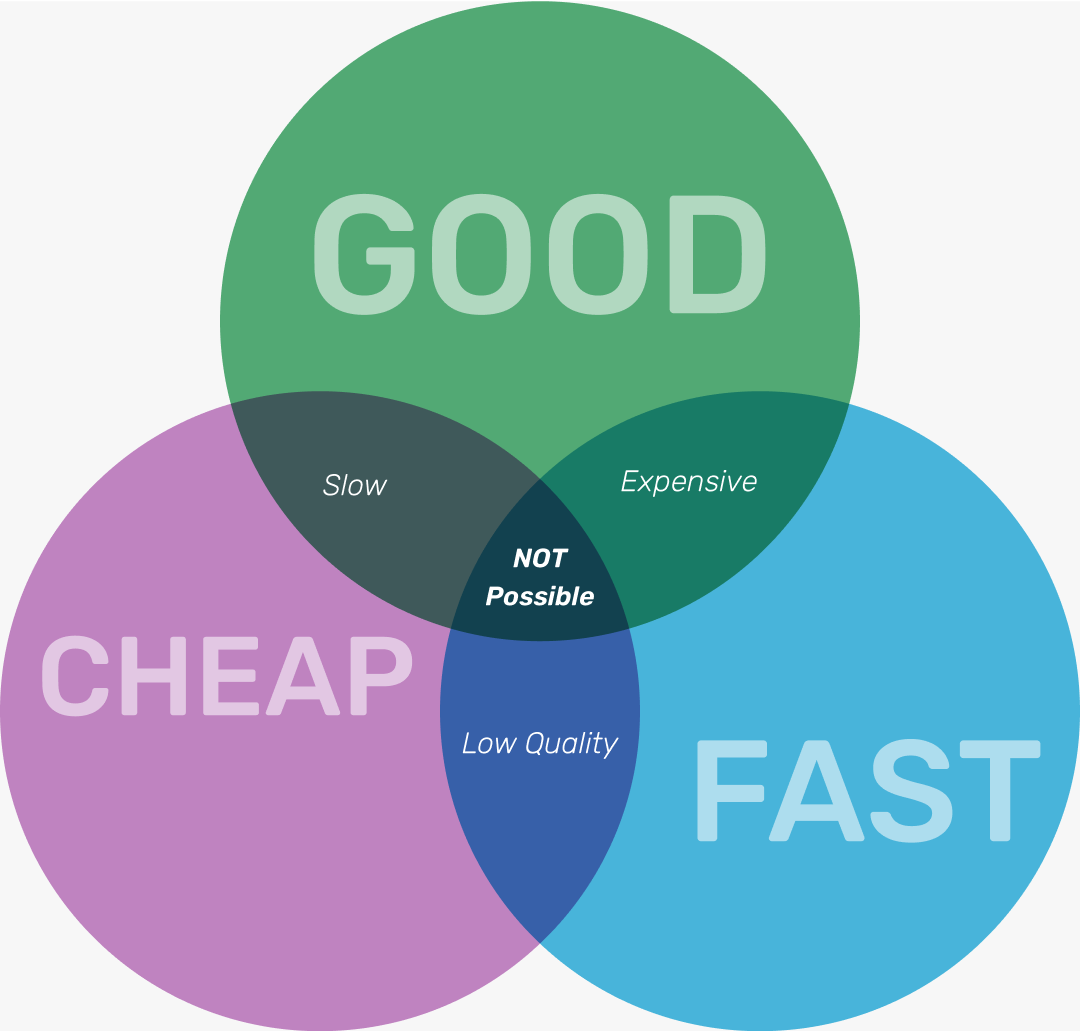You may encounter a variety of explanations on how the three main constraints in project management, such as Scope, Schedule, and Cost, function. It’s known as the Project Management Triangle, Triple Constraint, or Iron Triangle. As a Customer at the beginning of your product development journey, you’ll always be presented with the choice of an approach to follow: “Good, fast, or cheap. Pick two.”
With this in mind, you need to accept the following:
Cheap + Fast = Low Quality
Good + Cheap = Too Slow
Fast + Good = Expensive

Indeed, our experience demonstrates that accomplishing Cheap + Fast + Quality can be achieved by effectively managing the sequence of your steps and the Scope of Work involved. In doing so, you can discover solutions that successfully meet all three criteria.
Case 1
When you need to gauge market demand for an idea by showcasing it to potential clients or investors while minimizing losses if the idea is unviable, the market is unprepared for such a product, or securing crucial early-stage investments is delayed.
Solution:
No-Code Software Prototype
Case 2
When you need to test the feasibility of the technical implementation of an idea while minimizing losses if the intended implementation turns out to be unachievable, impractical, or not profitable.
Case 3
When you need to enter the market quickly and take advantage of its favorable conditions, gather the target audience feedback, and raise funds for subsequent product development stages without resorting to full-scale product development.
Solution:
Minimum Viable Product (MVP) that is based on:
- Utilizing ready-made third-party services through APIs
- Using Frameworks with a wide selection of ready-to-use components
- Off-the-shelf solutions that can be adapted to fit your objectives
- An optimal Software Architecture that doesn’t require lengthy and expensive deployment or core development
- Deferring activities such as developing automated testing and covering the application with all possible tests or continually updating project documentation to subsequent iterations
Next, after testing your idea for viability, verifying the technical feasibility of its implementation, launching the product, and securing funding for its subsequent development stages, you can begin seeking solutions that will maximize the efficient use of invested capital in software development while ensuring proper performance, security, and scalability, and minimizing maintenance costs. In the long term, this approach will fulfill the rule: Cheaper, Faster, and Better Quality.